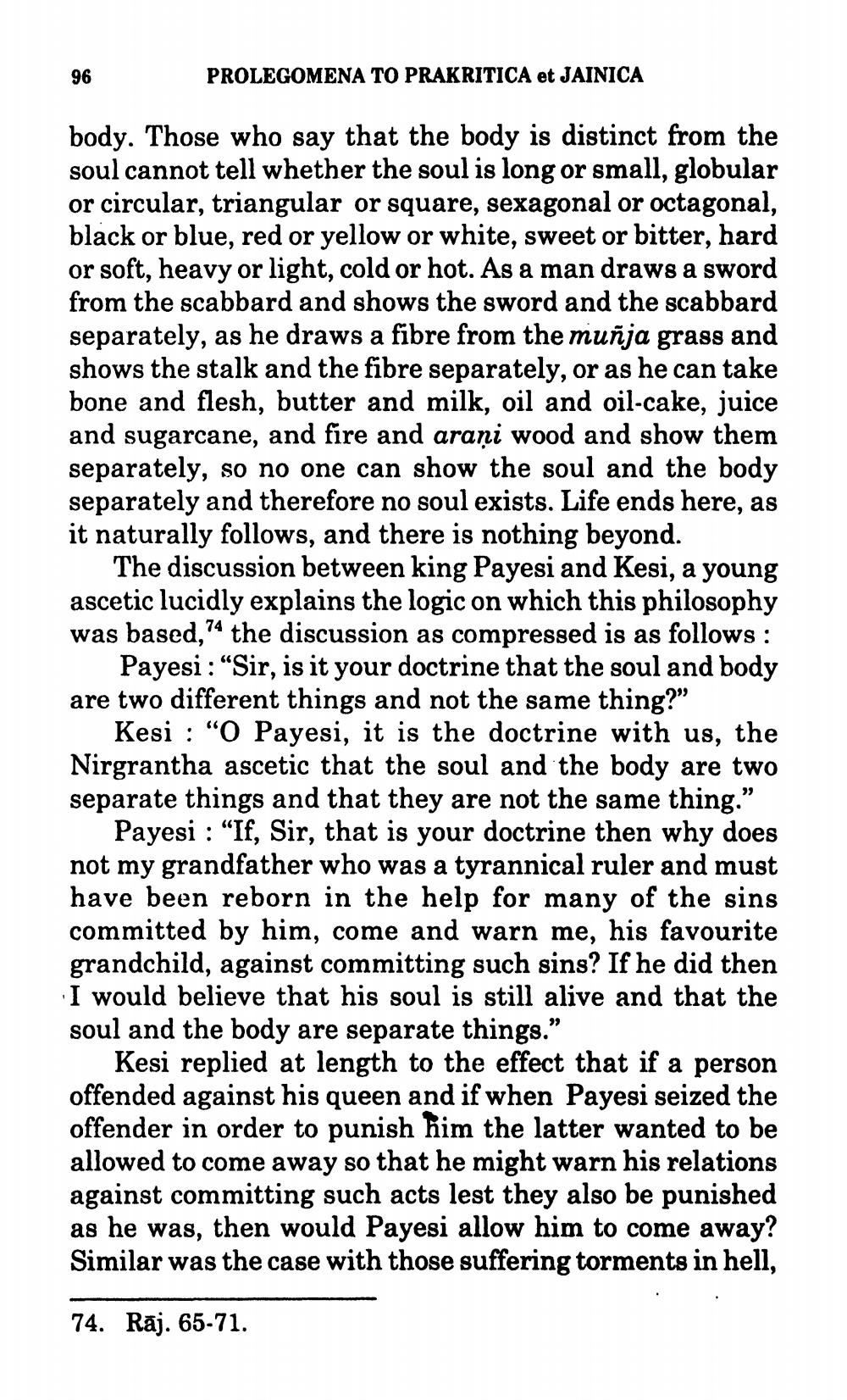________________
96
PROLEGOMENA TO PRAKRITICA et JAINICA
body. Those who say that the body is distinct from the soul cannot tell whether the soul is long or small, globular or circular, triangular or square, sexagonal or octagonal, black or blue, red or yellow or white, sweet or bitter, hard or soft, heavy or light, cold or hot. As a man draws a sword from the scabbard and shows the sword and the scabbard separately, as he draws a fibre from the muñja grass and shows the stalk and the fibre separately, or as he can take bone and flesh, butter and milk, oil and oil-cake, juice and sugarcane, and fire and araņi wood and show them separately, so no one can show the soul and the body separately and therefore no soul exists. Life ends here, as it naturally follows, and there is nothing beyond.
The discussion between king Payesi and Kesi, a young ascetic lucidly explains the logic on which this philosophy was based,74 the discussion as compressed is as follows:
Payesi : "Sir, is it your doctrine that the soul and body are two different things and not the same thing?"
Kesi : "O Payesi, it is the doctrine with us, the Nirgrantha ascetic that the soul and the body are two separate things and that they are not the same thing."
Payesi : “If, Sir, that is your doctrine then why does not my grandfather who was a tyrannical ruler and must have been reborn in the help for many of the sins committed by him, come and warn me, his favourite grandchild, against committing such sins? If he did then I would believe that his soul is still alive and that the soul and the body are separate things."
Kesi replied at length to the effect that if a person offended against his queen and if when Payesi seized the offender in order to punish him the latter wanted to be allowed to come away so that he might warn his relations against committing such acts lest they also be punished as he was, then would Payesi allow him to come away? Similar was the case with those suffering torments in hell,
74. Rāj. 65-71.




